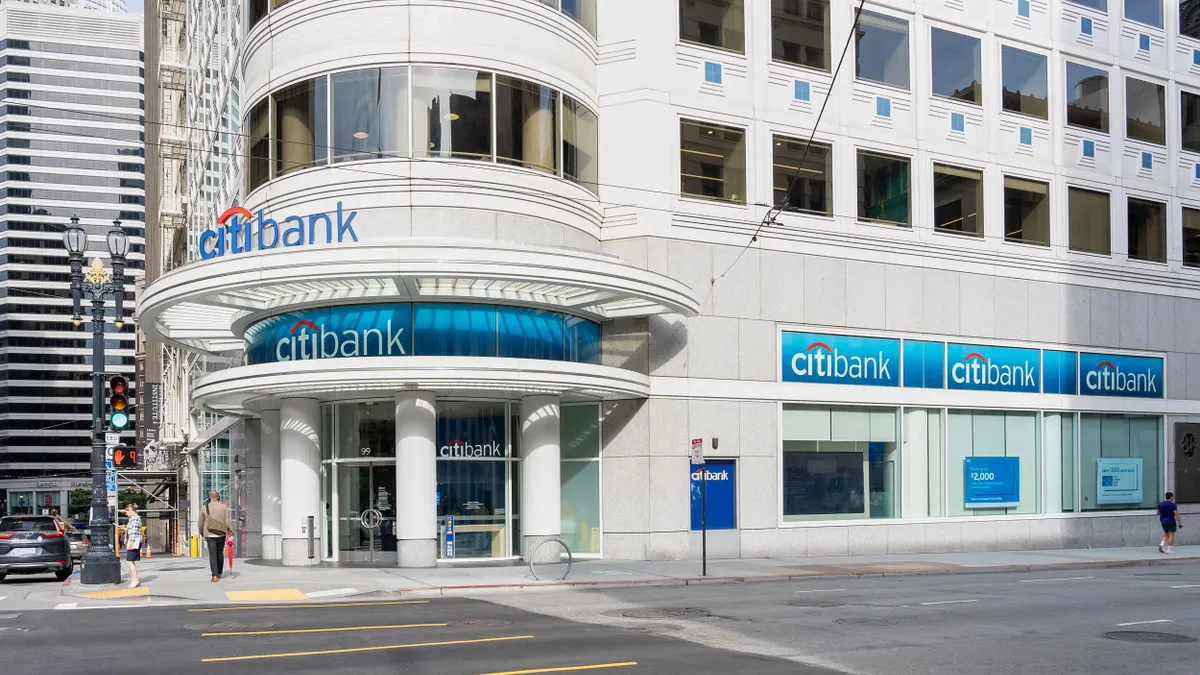Citi’s commercial bank is jumping on chances to serve as a consolidator of banking services for clients that have incrementally built a global presence.
That’s according to Tasnim Ghiawadwala, global head of the lender’s commercial bank, who pointed to a client with $1 billion in annual sales, operating in 60 markets, that’s dealing with 72 banks. That’s the type of opportunity Citi aims to capitalize on, leaning on its global reach.
For mid-size companies, that situation “happens sort of organically,” she said. Early on, commercial clients aren’t thinking from a global perspective. But smaller companies are taking an increasingly global posture, and as they rack up bank partners in multiple markets, it can “carry a huge amount of cost, to maintain such a large banking group,” she said.

With many companies finding themselves in that situation, “I have no doubt about our ability to grow in this space,” Ghiawadwala said. The New York-based lender maintained its global network – the bank’s “biggest competitive advantage” – when others with global ambitions retracted following the 2007-08 financial crisis, she noted.
Simplifying banking could mean assisting in some or all of the countries where clients operate or structuring their liquidity needs more efficiently, she said. “In some instances, it makes sense for the client to use a local or regional bank for their needs and in other markets it makes more sense to use Citi instead,” she said.
Serving in the consolidator role is “an opportunity for us to help them with harmonizing their banking relationships and centralizing their financial operations to have better visibility, increased access and ultimately generate efficiencies,” she said.
Citi has brought its commercial bank to several new markets over the last five years, including Western Europe, Canada and Japan. In the U.S., the commercial bank operates in 17 markets to cover top business hubs, although it works with clients across the country.
Citi doesn’t disclose the size of the commercial business, although Ghiawadwala said it’s a “decent part” of Citi’s banking segment. Citi’s banking revenues rose 18% in the second quarter, to $1.9 billion, although that also includes investment banking and corporate lending.
The lender is working to draw in new mid-sized corporate clients and do more for its current roster, she said. Growing the commercial client segment is one of Citi’s main priorities this year and next.
When asked about the size of the opportunity envisioned, the bank pointed to Ghiawadwala’s comments from 2022, when she told investors the bank is focused on an addressable opportunity of about $150 billion; the bank’s share of that was about 2% in 2022, and she said the bank sought to double that share.
“Even our existing clients are growing, and so, as they grow, their banking needs are changing,” Ghiawadwala noted in a recent interview. “There’s really a lot for us to do in terms of absolutely realizing our full potential.”
The lender has bankers on the ground in 90 countries, and a global relationship manager oversees a client’s entire reach across various markets, she said. Commercial clients do between $10 million to $3 billion in sales annually, with the “sweet spot” being companies already operating in a few countries that are looking for a global bank, she said.
The bank counted 14,000 commercial clients in 2022; Citi declined to share a current number. The lender focuses on six “super sectors”: industrials, digital technology and communications, retail, healthcare, business and professional services, and nonbank financial institutions.
Citi aims to serve clients’ everyday banking needs and as a strategic partner when it comes to investments and guidance. About 90% of clients are privately held businesses, and Citi aims to tap different parts of the bank when needed, such as if clients are looking to go public, Ghiawadwala said.
These mid-sized corporate customers particularly appreciate consumer-like capabilities in banking, because they’re companies that don’t have as much formal structure or lack big treasury or finance teams, she said.
Treasury management, for example, isn’t something companies tend to consider at the outset. As firms go through growing pains, “that’s where we can kind of come in and bring our large company experience,” Ghiawadwala said.
Citi has sought to simplify functions for clients – thinking through the number of clicks it takes to handle a task, or what web menus look like – while providing robust capabilities that some of the world’s largest companies turn to the bank for.
The bank unified functions through a new platform, introduced in 2023, that provides a single digital user interface. Last month, the bank added a digital credit application capability for smaller loans and an automated self-service credit management process, which allows Citi to monitor covenance without having to reach out to remind clients for information.
In the markets that have added those tools, about 20% of commercial clients are using its digital lending capabilities, the bank said.
Citi is also working to digitize banker tasks, with the bank’s artificial intelligence-powered assistant Stylus, to bolster productivity when it comes to generating reports and other duties. A heatmap tool, rolled out earlier this year, helps bankers identify geographic locations clients operate in, as bankers consider products that would be beneficial, Ghiawadwala said.






















